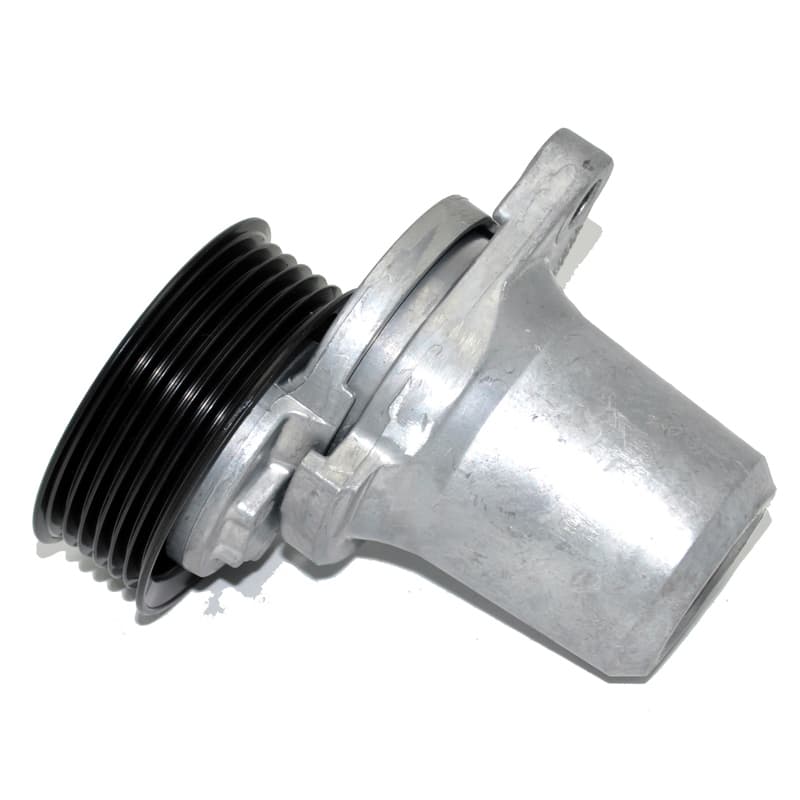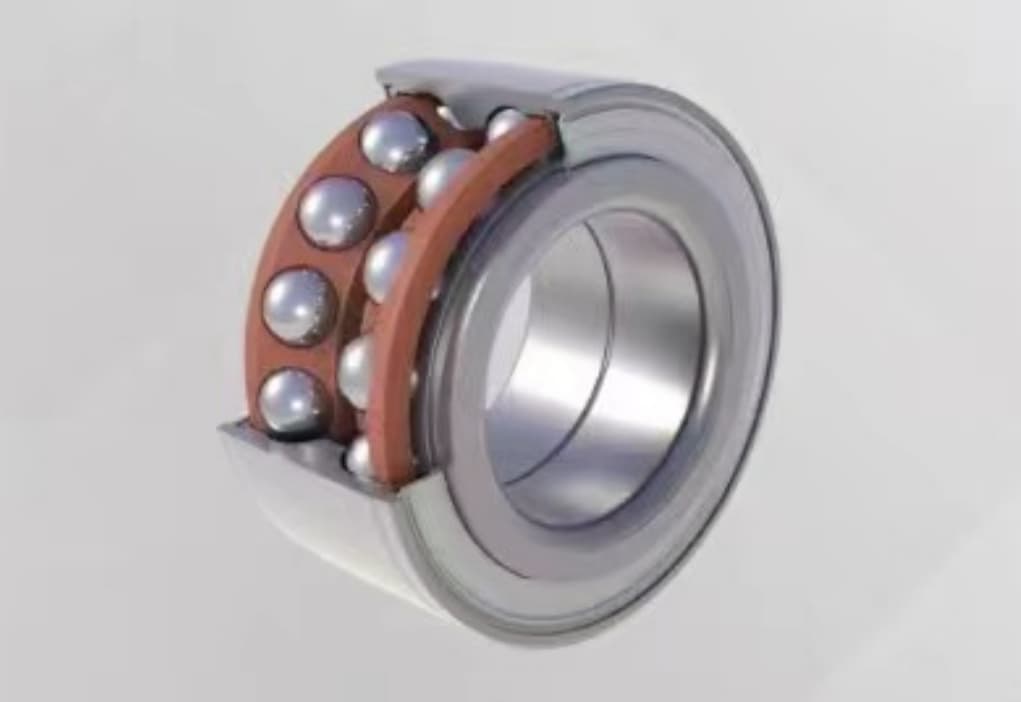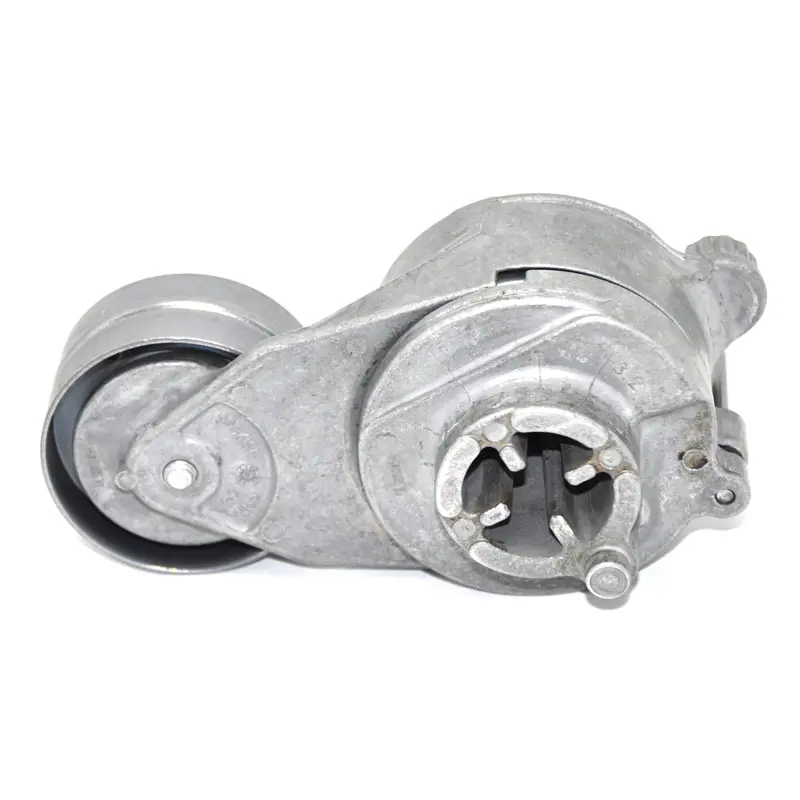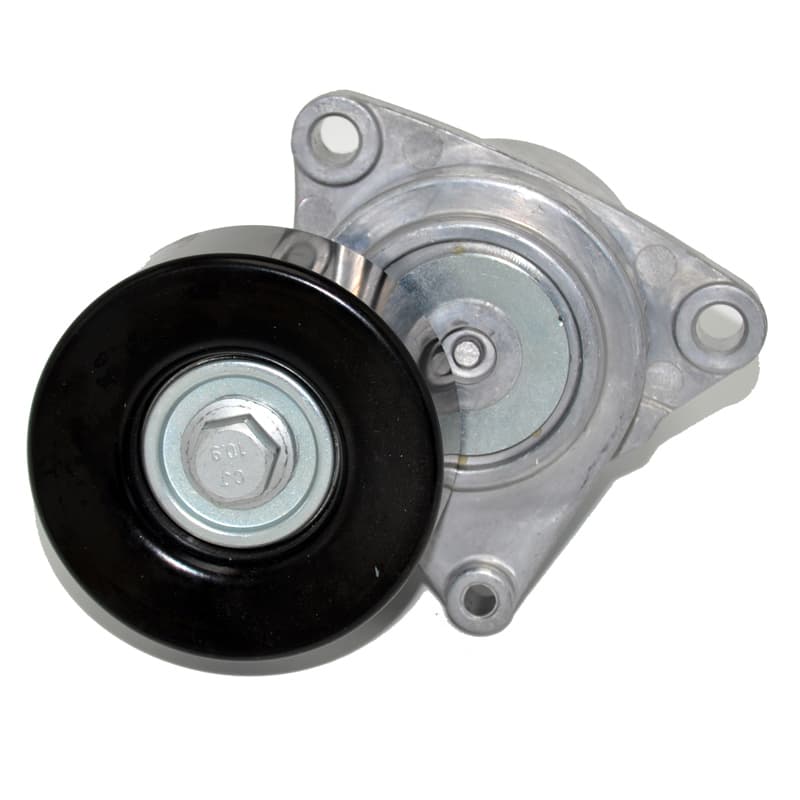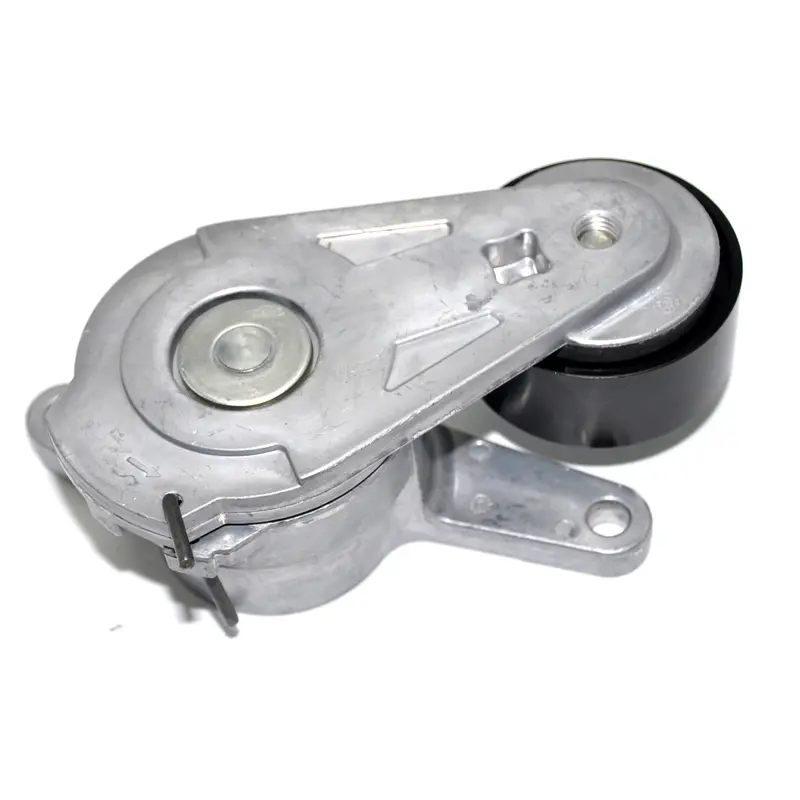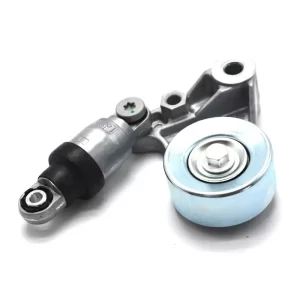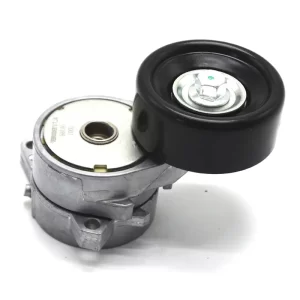텐셔너 및 아이들러 풀리 이해: 최적의 엔진 성능을 위한 핵심 부품
텐셔너와 아이들러 풀리는 자동차 및 산업용 엔진에서 타이밍 벨트와 액세서리 구동 벨트를 효과적으로 관리하는 데 없어서는 안 될 중요한 역할을 합니다. 이러한 구성 요소는 원활한 엔진 작동을 보장하고 벨트 구동 시스템의 수명을 연장하는 데 필수적입니다.
텐셔너 풀리
텐셔너 풀리는 효율적인 동력 전달과 벨트 미끄러짐 또는 조기 마모와 같은 문제를 방지하는 데 필수적인 구동 벨트의 올바른 장력을 유지하는 데 매우 중요한 역할을 합니다. 이 부품은 스프링 또는 유압 시스템을 사용하여 벨트가 작동 스트레스로 인해 늘어나거나 줄어들 때 자동으로 장력을 조정합니다. 텐셔너 풀리는 변화에 따라 지속적으로 조정함으로써 일관된 성능을 유지하고 벨트 및 관련 구성품의 수명을 연장하는 데 도움을 줍니다.
아이들러 풀리
반면 아이들러 풀리는 장력을 능동적으로 조정하지는 않지만 교류 발전기, 워터 펌프, 에어컨 컴프레서 등 다양한 엔진 구성품 주위로 벨트를 안내하는 역할을 합니다. 아이들러 풀리의 주요 역할은 적절한 벨트 정렬을 유지하여 진동을 최소화하고 마모를 줄이는 것입니다. 아이들러 풀리는 벨트의 적절한 정렬을 유지함으로써 벨트 전체에 걸쳐 장력을 고르게 분산시켜 엔진의 원활한 작동에 기여하고 정렬 불량과 관련된 문제를 방지합니다.
두 가지 유형의 풀리 모두 엔진 환경의 까다로운 조건을 견딜 수 있도록 설계되었습니다. 고온, 지속적인 진동, 끊임없는 회전력을 견딜 수 있도록 제작되었습니다. 이러한 부품의 내구성과 신뢰성은 엔진의 벨트 구동 시스템의 성능과 수명을 유지하는 데 매우 중요하며, 현대 기계 및 자동차 엔지니어링에서 그 중요성을 강조합니다.
아이들러 풀리 설치하기: 종합적인 단계별 가이드
1. 준비:
- 도구 어셈블리: 렌치, 소켓, 토크 렌치, 필요한 경우 풀리 풀러와 같은 필수 공구를 준비하세요. 올바른 공구를 준비하면 설치 과정이 더 원활해집니다.
- 수동 상담: 도표 및 토크 사양을 포함한 자세한 설치 지침은 차량의 서비스 매뉴얼을 참조하세요. 이렇게 하면 정확성을 보장하고 설치 중 발생할 수 있는 문제를 방지할 수 있습니다.
2. 안전 조치:
- 배터리 분리: 우발적인 엔진 시동을 방지하려면 배터리의 음극 단자를 분리하세요. 이 단계는 설치 과정 중 안전을 위해 매우 중요합니다.
- 엔진 냉각: 작업을 시작하기 전에 엔진을 완전히 식히세요. 이렇게 하면 뜨거운 부품으로 인한 화상을 방지하고 더 안전한 작업 환경을 보장할 수 있습니다.
3. 벨트 제거:
- 벨트 장력 해제: 렌치 또는 텐셔너 도구를 사용하여 뱀 또는 타이밍 벨트의 장력을 완화합니다. 텐셔너의 위치와 적절한 벨트 제거에 필요한 힘에 유의하세요.
- 벨트 제거: 아이들러 풀리 및 기타 풀리에서 벨트를 조심스럽게 밀어냅니다. 나중에 정확하게 재설치할 수 있도록 벨트 경로를 기록해 두세요.
4. 기존 아이들러 풀리 제거하기:
- 패스너 찾기 및 제거: 기존 아이들러 풀리를 고정하는 볼트 또는 패스너를 찾아서 제거합니다. 이 패스너는 새 설치에 필요하므로 보관하세요.
- 풀리 제거: 오래된 풀리가 저항력이 있는 경우 풀리 풀러를 사용하여 조심스럽게 제거하세요. 인접 부품의 손상을 방지하기 위해 과도한 힘을 사용하지 마세요.
5. 구성 요소 검사하기:
- 벨트 및 풀리 검사: 벨트에 균열이나 유약과 같은 마모 징후가 있는지 점검하세요. 다른 풀리의 손상이나 과도한 마모 여부를 점검하고 상태가 좋지 않은 부품은 교체하세요.
- 영역 청소: 장착 부위를 깨끗이 청소하여 이물질, 먼지 또는 오래된 윤활유를 제거하세요. 표면이 깨끗해야 새 풀리를 안전하게 설치할 수 있습니다.
6. 새 아이들러 풀리 설치하기:
- 풀리 위치 지정: 새 아이들러 풀리를 장착 지점에 맞춰 기존 풀리의 방향과 일치하도록 정렬합니다. 올바른 설치를 위해서는 올바른 정렬이 필수적입니다.
- 볼트로 고정: 장착 볼트 또는 패스너를 삽입하고 조입니다. 토크 렌치를 사용하여 제조업체의 사양에 따라 올바른 토크를 적용하세요. 풀리 또는 장착 부위가 손상될 수 있으므로 과도하게 조이지 않도록 주의하세요.
7. 벨트 다시 설치하기:
- 라우팅 다이어그램 따르기: 벨트가 새 아이들러 풀리를 포함한 모든 풀리 위에 라우팅 다이어그램에 따라 올바르게 배치되었는지 확인합니다. 정확한 배선은 오정렬을 방지하고 적절한 벨트 기능을 보장합니다.
- 적절한 장력 적용: 텐셔너 도구를 사용하여 벨트 장력을 조절하세요. 자동 텐셔너의 경우 올바른 장력을 유지하기 위해 제대로 작동하는지 확인하세요.
8. 정렬 확인:
- 안전벨트 착용 확인: 벨트가 모든 풀리 홈에 올바르게 장착되었는지 확인합니다. 올바른 장착은 미끄러짐을 방지하고 원활한 작동을 보장하는 데 매우 중요합니다.
- 부드러운 회전 보장: 아이들러 풀리가 흔들림이나 저항 없이 부드럽게 회전하는지 확인합니다. 이는 올바른 설치 및 정렬을 나타냅니다.
9. 운영 테스트:
- 배터리 다시 연결: 설치가 완료되면 음극 배터리 단자를 다시 연결합니다.
- 엔진 시작: 엔진을 시동하고 벨트 및 아이들러 풀리의 작동을 관찰하세요. 삐걱거리거나 덜컹거리는 등 비정상적인 소음이 들리면 설치 또는 정렬에 문제가 있음을 나타낼 수 있습니다.
- 벨트 추적 확인: 벨트가 미끄러지거나 탈선하지 않고 모든 풀리에서 올바르게 추적되는지 확인합니다. 벨트 구동 시스템의 효과적인 작동을 위해서는 올바른 트래킹이 필수적입니다.
이 세부 단계를 따르면 아이들러 풀리를 정확하고 안전하게 설치하여 차량의 벨트 구동 시스템의 성능을 최적화하고 수명을 연장할 수 있습니다. 올바른 설치는 엔진의 기능을 향상시킬 뿐만 아니라 차량의 전반적인 안정성과 효율성에도 기여합니다.

